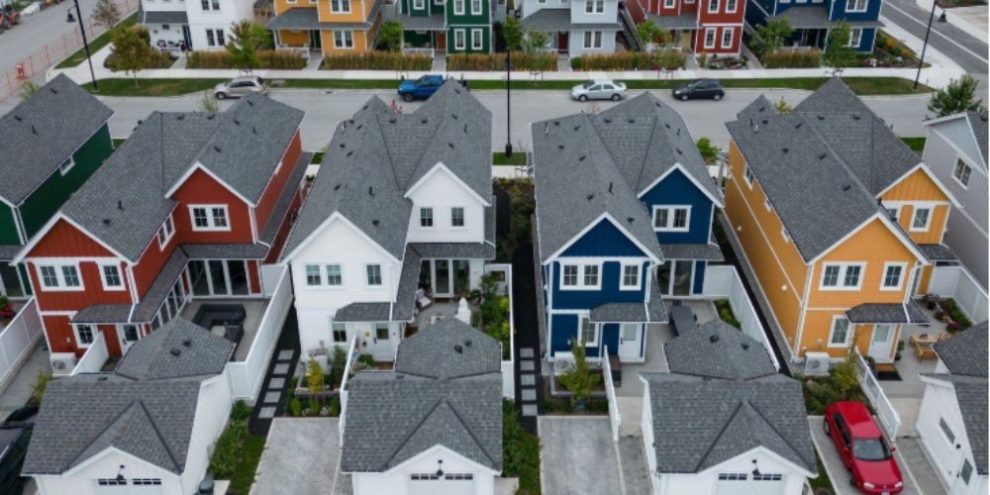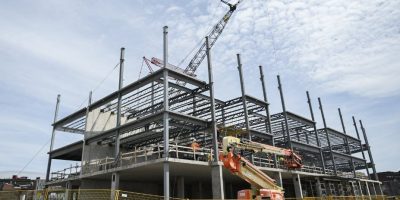
As Ottawa gears up to launch a new agency to build homes faster, internal government documents describe how dire the housing situation has become in Canada.
Briefing materials prepared for incoming Housing Minister Gregor Robertson this past May and released this week acknowledge that costly housing is hurting the economy and making it difficult for people to find places to live.
"Vulnerable populations and lower-income households are struggling to have their basic housing needs met due to a lack of suitable affordable housing," the documents say.
Middle-class Canadians are also struggling to buy homes and are staying in rental units longer, "placing additional pressures on rental supply and increasing rental costs."
Andy Yan, an urban planning professor at Simon Fraser University, said that it's revealing how bureaucrats frame the state of the housing market in Robertson's briefing binder.
"This is one of those documents that actually allows us to understand not only how the minister is briefed but then how the machinery of Ottawa views the housing problem across the country," he said.
Canada's rapid population growth in recent years outpaced growth in other G7 nations and is "compounding pressures and costs for communities," the documents say.
Elsewhere in the briefing materials, bureaucrats note that Ottawa's plans to tamp down on population growth are expected to slow economic activity and keep home prices lower than they would be otherwise.
Prepared during the peak of uncertainty tied to U.S. President Donald Trump's tariffs, the documents also contend that trade disruption would "create significant uncertainty on overall investments and prices."
The documents predict that Canadian home prices will grow faster in 2025 but cool over the next two years, while housing starts will slow down this year but remain above the 10-year average.
Rental supply is expected to grow while demand falls with slower population growth, pushing the vacancy rate higher, the documents say.
Projections in Robertson's briefing materials are based on forecasts from BMO, RBC, the Canadian Real Estate Association and the Canada Mortgage and Housing Corp.
Government figures in the briefing binder show the cost of constructing a residential building in Canada has increased 58 per cent since 2020 and could rise even further, thanks to U.S. tariffs.
The briefing note also acknowledges there has been "a growing mismatch between the housing types being built and those preferred and needed."
Barrie's News Delivered To Your Inbox
By submitting this form, you are consenting to receive marketing emails from: Central Ontario Broadcasting, 431 Huronia Rd, Barrie, Ontario, CA, https://www.cobroadcasting.com. You can revoke your consent to receive emails at any time by using the SafeUnsubscribe® link, found at the bottom of every email. Emails are serviced by Constant Contact
Yan said the briefing notes reveal a focus on supply and market dynamics but omit much analysis on homebuyers and renters.
In major cities such as Vancouver, Yan said, the income differential between renters and homeowners is significant and plays a major role in determining overall housing affordability.
"They talk about housing prices. They talk (housing) starts and resale activity and rental vacancies. But I think what I don't necessarily see is, who we're trying to house," he said.
The documents allude to the financialization of Canadian real estate, citing estimates from the Federal Housing Advocate that 20 to 30 per cent of purpose-built rental units are owned by institutional investors.
But Yan said the binder pays little attention to the role foreign capital has played in market prices, and could play in getting new homes built.
"I look forward to hearing about their solutions but yet their initial diagnosis of the problem seems to be about half the picture," he said.
The briefing materials show that average nightly homeless shelter use rose 43 per cent between 2020 and 2023. Lengths of shelter stays are also increasing, the documents note, suggesting barriers to ending homelessness.
The documents say the government has fallen behind on investing in housing offered below market rates, a shortfall that is hitting newcomers and vulnerable Canadians especially hard.
Canada's stock of non-market affordable homes stands at four per cent of the total housing mix, short of the OECD average of seven per cent.
Robertson himself acknowledged Canada has been a laggard in non-market housing on his first day as minister.
“The Government of Canada has not been building affordable housing since the nineties and we’ve created a huge shortage across Canada. That’s where the big need is right now," he told reporters after his swearing-in on May 14.
Asked on that day whether he felt home prices need to come down to restore affordability, Robertson said he did not.
"I think we need to deliver more supply and make sure the market is stable," he said.
The federal government plans to create a new Build Canada Homes agency to ramp up the pace of affordable homebuilding and encourage builders to adopt new technologies.
Prime Minister Mark Carney said at the Liberal caucus retreat earlier this week that his government would launch the new agency in the coming days. He suggested a major housing announcement would be made on Sunday.
Conservative Leader Pierre Poilievre on Tuesday blamed the Liberals for the pace of housing construction following the release of a CMHC report showing a slowdown in housing starts in Toronto and Vancouver in the first half of 2025.
"Mr. Carney has accomplished the impossible. It is a triple crisis, with prices too high for buyers to buy, too low for sellers to sell and inadequate for builders to build," he said.
He also said the Liberals need to "get immigration under control," arguing that the large influx of newcomers over the past decade has caused housing shortages and is to blame for rising youth unemployment.
— with files from Sarah Ritchie
This report by The Canadian Press was first published Sept. 12, 2025.





